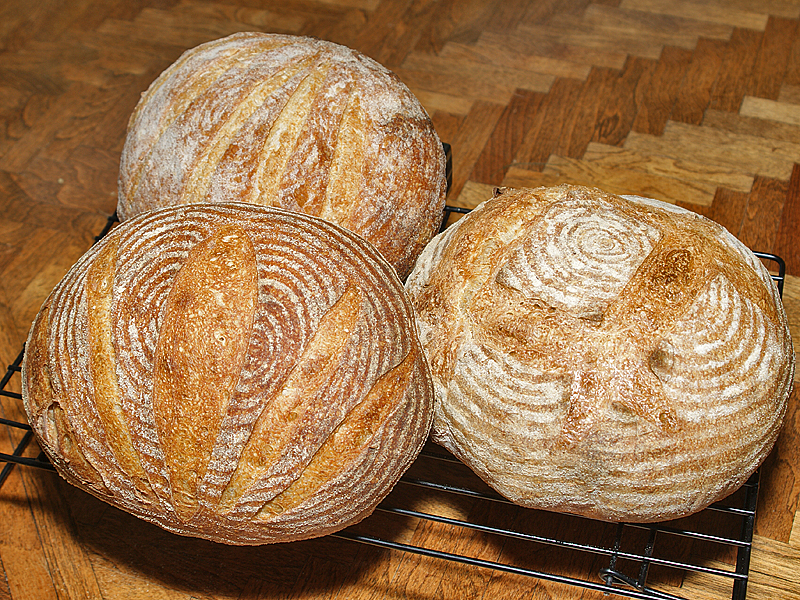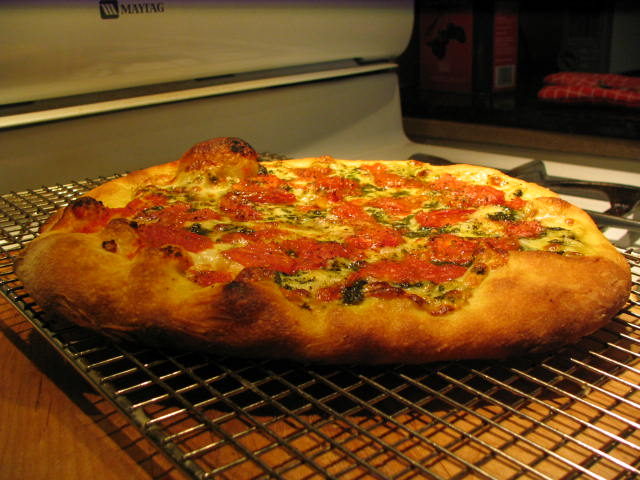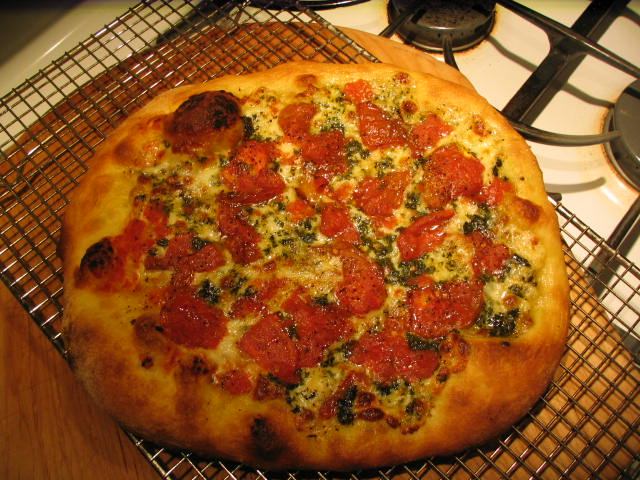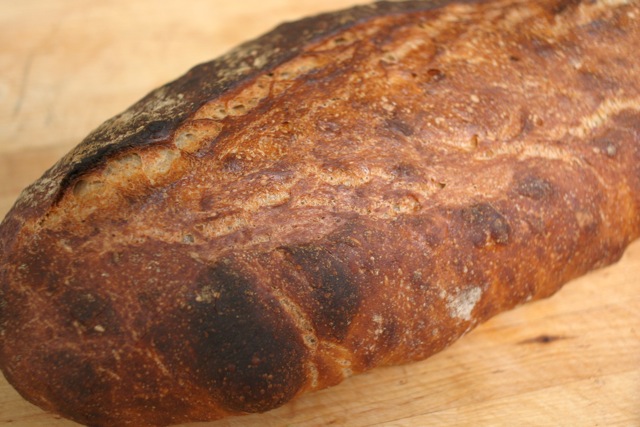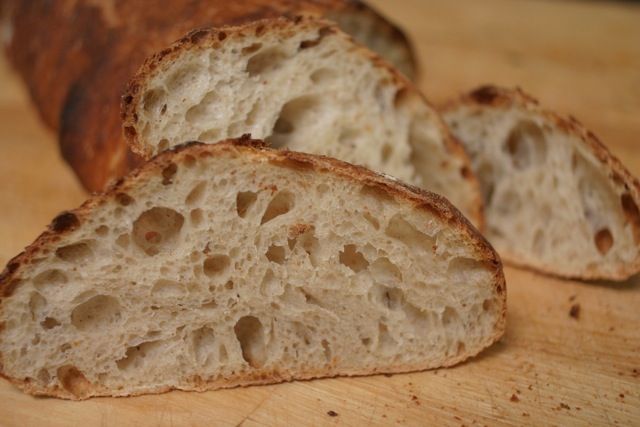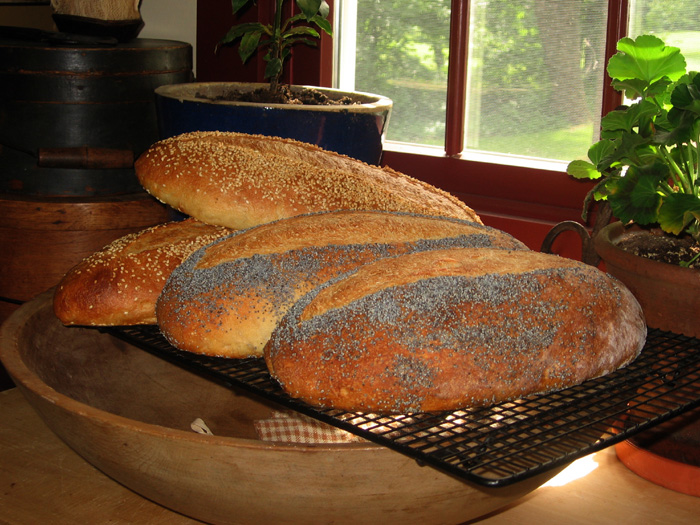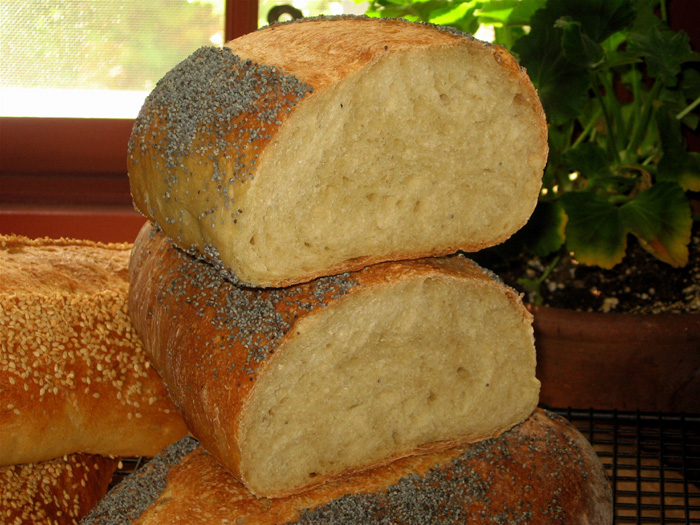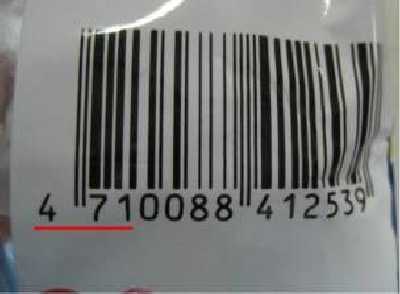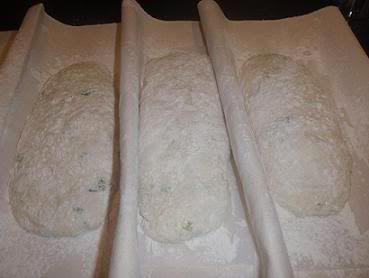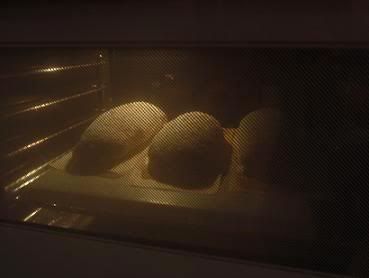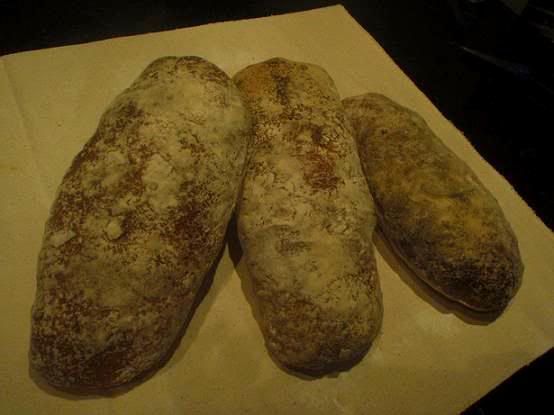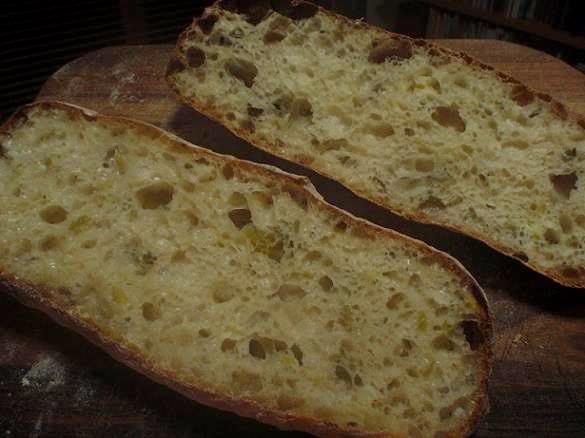Colors excite me. Often I buy a book because the cover page takes my fancy. Eric Kayser's "Rund Ums Brot" is one such book. When I bought it, I knew it was not in English; but all I want was to look at the pictures. There is an expression in Chinese, your eyes want to eat ice cream too, very crude (or, in English, feast for the eyes?). It was when I saw this page (below) that I went to google translator for help:
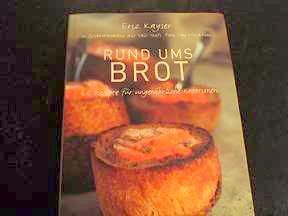
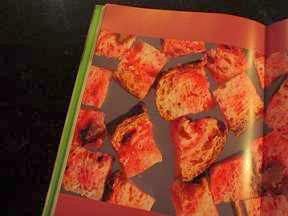
Eric Kayser's "Rund Ums Brot" page 108 (Pink Caramelised Almond Bread)
Google didn't seem to make sense, then I thought to myself how would it be possible that this book was in German but not in French or English? My point was there should be an English or French version. Then, it dawned on me, YES, this book is in English under a different title - "Beyond The Bread Basket." This was not the first time that I bought same book twice, or same CD twice, or same clothes twice (or thrice, in different colors). On page 130 of this latter book, it says the bread is a Pink Caramelized Almond Bread, using pink caramelized almonds (Oh, not pink pralines again!). I cannot get my hands on these pink pralines because G. Detou has been politely avoiding my small order (more trouble than what it's worth to them).
Eric Kayser's recipe has butter, sugar, milk, cream - the full Monty. While the quantities are not large enough to qualify this bread as a brioche, I am not going to go that route again - sourdough breads really don't need them. The question remains - where would I get the red color? Ahh, beetroot, my vegetable dye! I once made a beetroot walnut chocolate cake that my son absolutely loved. Think of a carrot cake that is full of walnut and chocolate pieces, then substitute beetroot for carrot! You get an absolutely moist cake which guarantees you full degustation by the kids. Beetroot is so good for them (and us).
I thought it would be interesting incorporating this ingredient into a sourdough bread. Walnut would normally be a good pairing except, hey, why not test out new choices (well, fine, almond is not new). The white color of almond slivers is infinitely more attractive against the red of beetroot.
So, here we go, we've got all our constituents lined up.
My formula
200 g sourdough starter @ 75% hydration refreshed late afternoon
286 g Australian Laucke's Wallaby's bakers unbleached flour
134 g water
60 g sliver almond*
100 g beetroot (diced 0.5 - 1cm cubes)**
8 g salt
1.5 g instant yeast (or 1/2 tsp)
* I could easily get fresh beetroot and slow-roast it in oven to cook it, but it would be more work than challenge at this stage. I need to work out the moisture content of these red darlings in order to get my dough hydration right. I am shooting for 67.5% dough hydration, not very aggressive. My technique is as yet not very good for high hydration dough. I am working on 50% weight in beetroot as extra hydration for dough.
* I am working on a combined almond & beetroot ratio of 40% flour, which may seem high for some. Other than these, I have resisted the temptation of using any flavor improvers. (But salt? No, I'd like to think it is there for the integrity of gluten development.) As for the instant yeast, well, call me a chicken.
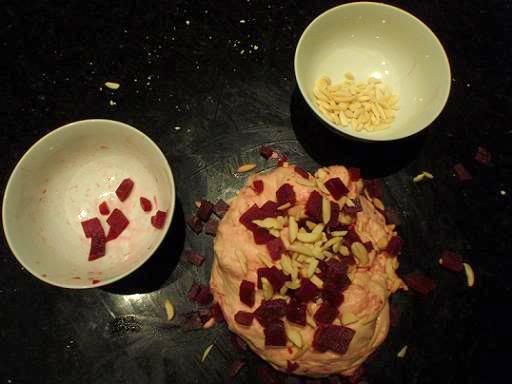
It's like a mission impossible at first trying to knead all this in....
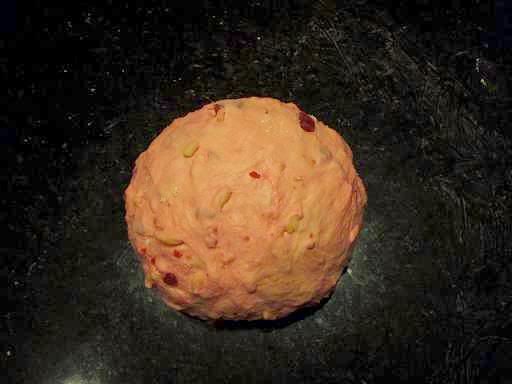
Then, all of a sudden, after 6 - 7 min of kneading, it all came together.
I just went and had a peep. At this very moment, the dough is peacefully going through its first-fermentation. I shall return after a short night's cap myself to report on its further development.
Shiao-Ping
Day Two
It sang when it came out of the oven for over 3 min! My son said, "Why is it crackling?"
My daughter asked me what bread that is; I said, "Beetroot and Almond." She goes, "Pee-Yew!" So, there you go - one person's glorious bread is another person's pee-yew.

The dough just before going into the oven (little did I know the color was to disappear in heat)
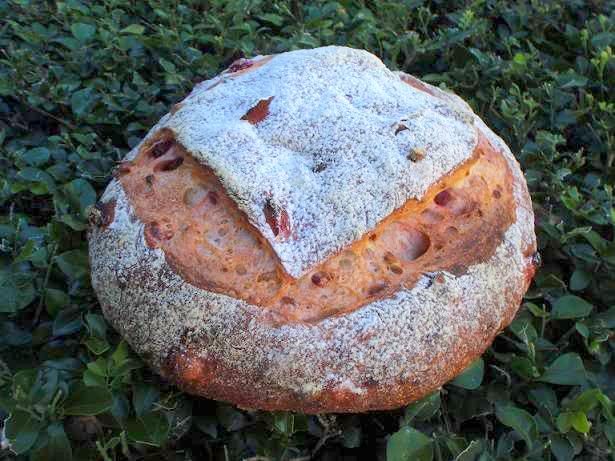
Voila! Beetroot Almond Sourdough Bread
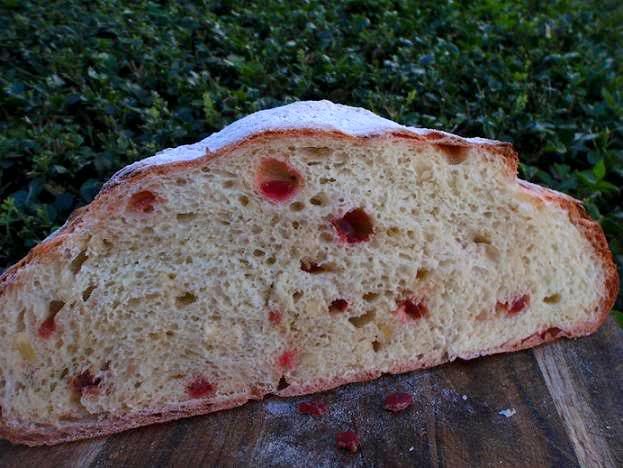
The crumb
Verdict:
1. Shape and color: I am happy with the boule shape and scoring but am disappointed that the pink disappeared. (It was hot pink throughout, inside and out, before it was baked.) Nontheless, the color of the crust is what I look for in a well-cooked loaf, warm, like harvest in autumn.
2. Aromas: The aromas from the crust, as well as from the crumb, are pleasant but faint even though the crust sang loudly as the bread came out of the oven. In truth, beetroot is not one of those vegetables that gives off strong odors.
3. Crumb: To my surprise, the crumb is distinctly creamy (or even golden) in color, despite the red dots of beetroot scattered about. Its texture is elastic, typical of sourdough breads, and at the same time, moist and tender.
4. Flavors: Beetroot has a very faint sourness, as well as sweetness, taste. Its color not withstanding, it does not have a domineering taste. So as slivered almonds. As a result, the flavors of this sourdough bread are those of a classic white sourdough bread with a bit of interesting features thrown in; ie, red dots for visual, and crunchiness (of almonds) for extra texture and mouthfeel.
Well, it's not a bad sourdough (but no where near what the subject title of this post has announced!) . My son has already told me, "Oh, I am not eating that!" I am sure if the red dots in the bread are replaced by brownish chocolate bits, he'd be racing to have a piece. My kids know their mother is someone who likes to have her imagination run free. Their constant complaint is their mother ceases making them something once perfection is reached; she moves on to something else.
Memory does not condition my choices. I like to try new frontier.
Try next time:
Beetroot Salad Sourdough (another "pee-yew" idea?). Shred raw beetroot and marinate it in lemon juice, salt, and a little bit olive oil; use the resulting red juice as part of the hydration for the dough, and mix in the raw beetroot in the dough. The long fermentation will moderately cook the raw beetroot and hopefully still give some crunchiness to the soft crumb.
Shiao-Ping

